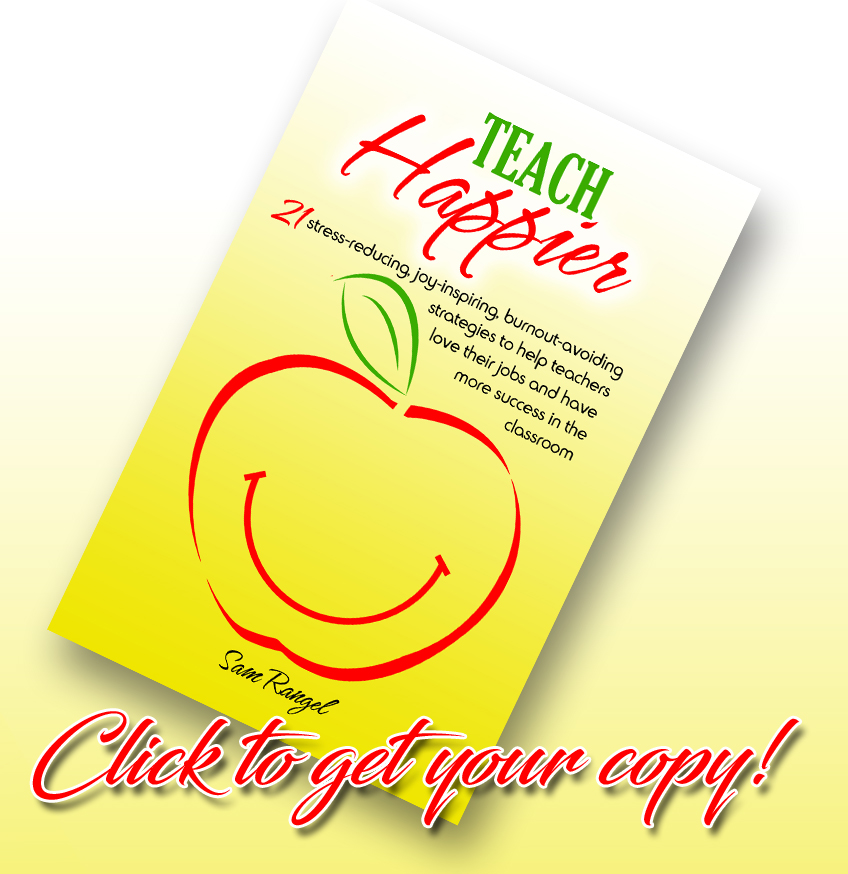Classroom management is the single most searched for topic on SuccessInTheClassroom.com.
It’s a pretty important topic, especially for new and soon-to-be teachers.
As an Assistant Principal, part of my job is dealing with students who have been disrespectful or defiant in a classroom. Coming to see Mr. Rangel is not a good thing most of the time. I’m the one who has to hand out the consequences and notify parents. It’s not my favorite part of my job, but I use it to connect with students and hopefully give them some good life advice.
What I’ve noticed in my years as school administrator is that there are some teachers who send very few, if any, students to my office, while other teachers send a lot.
Why is that?
Is it because some teachers are just lucky that the “bad” kids are not enrolled in their classes?
Is it because some teachers have a higher tolerance for student disruption than others?
If you’re a new or soon-to-be teacher, this is a crucial question that you need answered. You will have that class that will test your patience. You will have that student who will come to school with the focused goal of making your day miserable.
What will you do?
In my experience as a teacher and as an administrator, I’ve come to discover that the greatest skill a teacher can attain in order to keep the class on task is the skill of creative lesson planning.
This is the greatest classroom management lesson.
An engaging lesson plan is the best defense against the disruptive class.
I’m a little embarrassed to say that I’ve walked into classrooms where students have been kicked out for poor behavior, and part of me wants to say, “I don’t blame the kid for acting out.” The lessons I see in these classes are, well…boring. Boring lessons are a sure way to have a bad day.
The quote is true: An engaged student is not a behavior problem.
Creating engaging lessons, however, is not easy.
The skill of creative lesson planning is just that: a skill.
You don’t leave teacher school with the ability to create innovative and engaging lessons right away. You may have the knowledge of creating a basic lesson plan – the structure of a good lesson plan, but until you get your students, you won’t know what kind of lesson plan you’ll need.
When I first started as a teacher, I was placed in the middle of the toughest neighborhood in the city. All my classes were those classes. I found out very quickly that if I didn’t spend time and create attention-grabbing and engaging lessons, I was not going to survive those first years.
It was not easy. It took time. It took effort. It was a little discouraging.
Still, I learned.
I learned that the more time I spent on creating my lesson plan, the less time I needed to keep the class on task.
So, how do create engaging lesson plans? Well, there really isn’t a formula. Much of it depends on what your students are like. There are a few tips, however, that I would like to offer that I hope you will find valuable.
Ask a Rock Star. – Find a successful teacher and ask him or her for advice. Don’t be shy. Teachers love to teach. That’s what they do. The problem is that the only people they spend their time teaching are the ones who have to be in their class. If you’re a new teacher, ask the principal who the Rock Star teachers are, and ask them for tips on creating lesson plans. In fact, ask the principal for a sub to spend a day sitting in the classes of the Rock Stars. I can almost guarantee that those teachers will love to share their wisdom with you.
Get rid of the text book. – Yes I said it. Get rid of the textbook. There is nothing more boring than reading from a textbook. It ranks up there with watching paint dry. Read the part of the textbook that has the information that the students have to know. Then give them that information in a new way. This is where you have to think out of the box. This is the fun part – thinking of ways to get the information to the students without using the boring textbook.
Think like a kid. – If you were in your class, what would you want to do? I know you would say listen to the teacher read from the textbook. Right? You’d want to play a game or have some kind of competition or walk outside or eat candy or listen to a story. Too many times, we remember the last time we were in a classroom as a student, and we try and teach like how we remember. The problem is, the last time you were a student, you were in college. You can’t teach a group of 13-year-olds like they are college students. My suggestion is that you think about that one student who is really not connected to school when you are writing your lesson plan. Design a lesson that will keep him engaged, and the rest of the class will be engaged also.
Make them move. – If you expect to have success in your classroom by forcing a bunch of kids sit still in their chairs while you deliver a lesson, you will be frustrated the entire year. It’s OK to have your students get up out of their chairs once in a while. Let them talk to their shoulder partner during the lesson. Every now and then, make a walk outside part of your lesson plan. Have the students walk around the room in stations. As an assistant principal, I would love to walk into a classroom and see students up and about as part of their learning.
Get the 411. – Find out all you can about your students. What are their interests? What songs do they listen to? The more information you have about your kids, the better you will be able to create lessons that appeal to their interests. Try quoting one of the more popular songs while you’re talking about science. That will really make them pay attention. Find out, especially, all you can about that one student who is being the most disruptive. If he’s into soccer, include some soccer in your lesson plans. Create assignments that allow him to show off his soccer knowledge.
If you end the day with more gray hairs than you came to school with, you have to ask yourself the questions: Was my lesson engaging enough? Did I spend enough time on my lesson plans?
It’s easy to place blame on kids, their parents, ADHD, the weather, etc.
My experience tells me, however, that the level of classroom management will never exceed the level of lesson plan design.
And that falls on the teacher.
I hope you found this post valuable.
Connect with me on Twitter to or on Facebook . I would love to hear from you.
Until next time, here’s to your Success in the Classroom!
Thanks,
Sam



